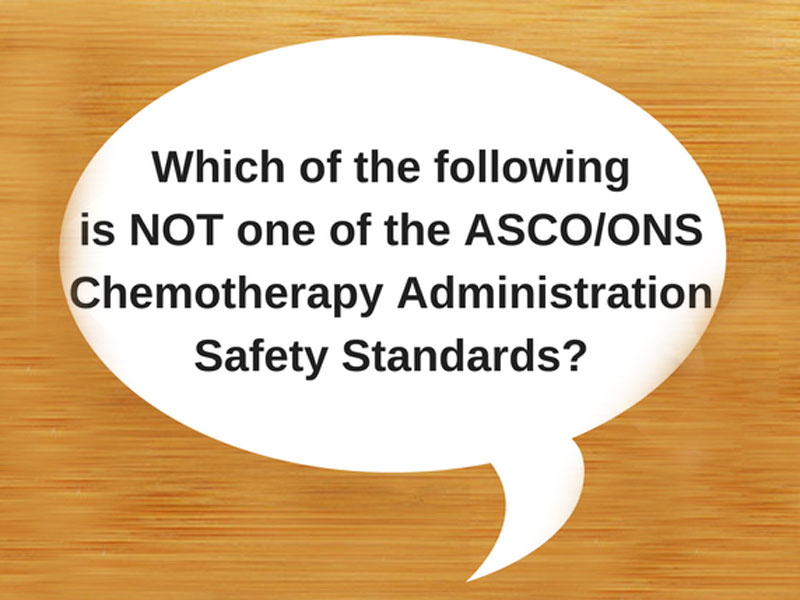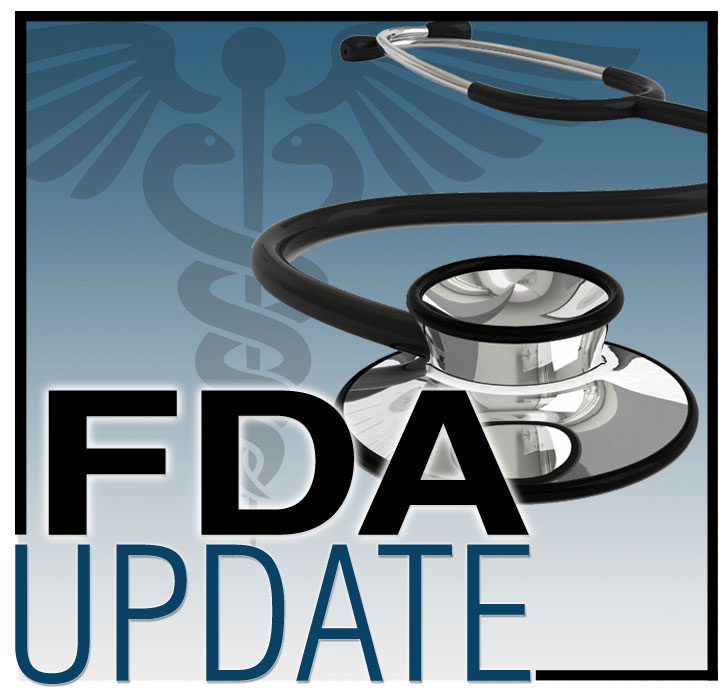Use These Methods to Evaluate EBP Outcomes and Disseminate Results

One of the most important but often challenging steps in the evidence-based practice (EBP) process is ensuring that the change we wanted to happen actually occurred. After a practice change has been implemented, it’s important to ask if the expected outcome was achieved. Patient-related outcomes can be psychosocial (change in symptoms such as depression or anxiety), physiologic (reduction in catheter-associated urinary tract infections), or functional (increased exercise or mobility). Outcomes can also be process related, such as reduced readmissions or more efficient discharge planning.
Which Is Not an ASCO/ONS Chemotherapy Safety Standard?

Which of the following is NOT an ASCO/ONS Chemotherapy Administration Safety Standard?
A. Chemotherapy orders include sequencing of agents, when applicable.
B. A licensed independent practitioner is on-site and readily available to staff where chemotherapy is administered.
C. Two chemotherapy-competent RNs must be in the infusion area at all times when chemotherapy is infusing.
D. If chemotherapy is administered in a non-healthcare setting, a second identifier such as a driver’s license, is used to verify the patient’s identity.
Cancer Prevention and Awareness Starts With Oncology Nurses

April is designated as National Cancer Control Month in the United States. It’s a federally endorsed observation, annually encouraged by a proclamation from the president. April is dedicated to raising awareness for cancer prevention and treatment throughout the country. Approved through a joint resolution by Congress in 1938, the yearly presidential announcement serves as a reminder to all Americans that awareness of the factors that cause or prevent cancer are crucial to the public health.
Labs Differ Widely in BRCA Testing Protocols

An international survey of 86 genetic testing labs showed inconsistent protocols and standards for analyzing the BRCA1 or 2 cancer susceptibility genes and their variations. The results were reported in NPJ Genomic Medicine.
FDA Approves Fostamatinib Tablets for ITP

On April 17, 2018, the U.S. Food and Drug Administration approved fostamatinib disodium hexahydrate tablets for the treatment of thrombocytopenia in adult patients with chronic immune thrombocytopenia who have had an insufficient response to a previous treatment.
The Role of Oncology Nursing Navigation Continues to Grow

Oncology nurse navigators (ONNs) fill a critical, ever-growing role in cancer care settings across the country, providing patients with the resources, education, and care coordination they need to successfully navigate their cancer journey. By reducing barriers and burdens on patients and their caregivers, ONNs help lead patients from initial diagnosis, during treatment, into survivorship, and often through end-of-life care.
The Case of the Checkpoint Inhibitor Side Effects

John is a 62-year-old man diagnosed with metastatic non-small cell lung cancer (NSCLC). His tumor tested positive for high PD-L1 expression, and he began pembrolizumab treatment. John presents to the clinic for his third treatment and mentions that during the past week his arms and chest have been itchy and he has noticed a red, bumpy rash on his chest. When assessing John’s skin, you note a maculopapular rash on both of his upper extremities, anterior chest, and upper abdomen. What would you do?
FDA Approves Nivolumab Plus Ipilimumab Combination for Renal Cell Carcinoma

On April 16, 2018, the U.S. Food and Drug Administration (FDA) granted approvals to nivolumab and ipilimumab in combination for the treatment of intermediate or poor risk, previously untreated advanced renal cell carcinoma.
- Read more about FDA Approves Nivolumab Plus Ipilimumab Combination for Renal Cell Carcinoma
- Add new comment
Supporting Second Victims Will Make Your Practice Safer

Adverse events and traumatic moments send shockwaves through the entire care team. As families grieve the loss of a loved one, providers can often suffer from feelings of overwhelming guilt, remorse, or helplessness. When clinicians struggle with the aftermath of a tragic care event, they become known as second victims. Second victim experiences can lead to lapses in safety and care and could be potentially dangerous for future patients.
Which Is a Breast Cancer Risk Factor?

Test your oncology knowledge with ONS. Which of the following is a risk factor for developing breast cancer?
- Women who are gravida 3 para 2
- Mild to moderate alcohol use
- Absence of the BRCA1 or BRCA2 mutation
- Going through menopause prior to age 55





